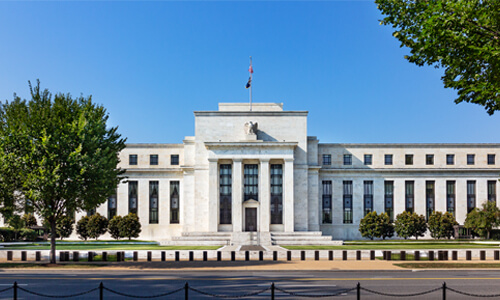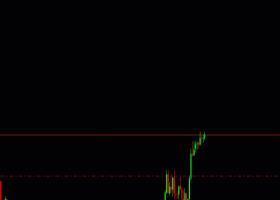weekly Technical and Fundamental Analysis of Gold – April 28
The global gold ounce saw a decrease of over 2% in the week ending April 26. In fact, after 5 consecutive weeks of upward movement, this is the first week that gold has started to correct itself.
If you look at gold in the weekly timeframe and plot an RSI indicator, you will notice the RSI indicator’s peak is currently declining and still in the overbought zone.
It is worth noting that at the start of the working week and last Monday, gold came under severe selling pressure and registered its highest daily decline in 2024.
While the global ounce was able to recover some losses in the second half of last week, it ultimately ended its working week in negative territory.
Now all markets are waiting for the Federal Reserve’s May meeting and the important US Non-Farm Payrolls (NFP) report that is set to be released next week.
Events of the past week in the gold market:
Last week, with the start of the forex trading day, global gold came under intense selling pressure from market bears. This decline was so significant that gold managed to set its largest daily decline record in 2024 (gold opened at $2392 and dropped to $2324, a decrease of around $70).
From a fundamental perspective, the main reason for this decline was the easing tensions between Israel and the Islamic Republic of Iran in the Middle East. If you recall, in previous weeks, Iran had received hundreds of drones and missiles from Israel and they had retaliated by launching several drones into Iranian skies as a sign of revenge.

This important factor led to global gold, as a safe asset, receiving significant attention and soaring to around $2431, its highest historical level.
Now that the Middle East had experienced relative calm, gold finally started to correct itself and showed its largest daily decline in 2024, dropping around 2.7%.
This decline continued on Tuesday, with global gold falling to around $2290, its lowest level since April 8.
Then, after the weak PMI report and the US dollar index coming under selling pressure on Tuesday, global gold also moved upwards (above $2300) and ended its working day without any significant events.
According to the latest reports from the S&P Global Ratings, the United States’ composite purchasing managers’ index (PMI) decreased from 52.1 in March to 50.9 in April.
This report indicates a slowdown in growth momentum in business activities and the private sector in the US.
As you know, the PMI report includes various components and subcategories, such as the inflation gauge component, which unfortunately also decreased, leading to the US dollar index starting to decline.
Meanwhile, Chris Williamson, Chief Economist at S&P Global Ratings, said:
“The survey findings PMI, weakening demand, and cooling labor market led to downward pressure on prices as April saw a reduction in the rate of increase in selling prices of goods and services.”
On Wednesday, after the US Census Bureau’s report showing a 2.6% increase in durable goods orders to $238.4 billion in March, the USD showed resilience against its competitors. In contrast, gold made some efforts for further gains but ultimately did not make any significant progress.
Then came Thursday; the day when the entire market awaited the important report on the first quarter Gross Domestic Product (GDP) from the United States.
The US Bureau of Economic Analysis (BEA) reported on Thursday that the US GDP increased by an annual rate of 1.6% (in the initial estimate) in the first quarter of 2024.
It is worth noting that this figure followed a very good 3.4% in the fourth quarter of 2023 and was lower than the predicted 2.5%.
The US dollar index also decreased in response to the GDP report, putting pressure on the US, causing global gold to move upwards again.
However, the limited rise in gold remained as the Gross Domestic Product report also showed that the Producer Price Index, which is also known as a reducer of the GDP, increased from 1.7% to 3.1%. This indicates a stronger impact of inflation on GDP growth.
Finally, Friday arrived; the day when the entire market awaited the important report on Personal Consumption Expenditures (PCE) in the US.
According to the latest reports from the US Bureau of Economic Analysis, annual inflation in the US, evaluated by the PCE indicator, increased by 2.7%. It’s worth noting that the market was expecting 2.6%, and the February figure was 2.8%.
Additionally, the core annual PCE, which excludes food and energy, also increased to 2.8%. This figure was exactly in line with the number announced in February and better than the market’s expectation of 2.6%.
This important factor led to the US dollar index, which had fallen to around 105.40, returning above the 106 level again and preventing further increases in gold.
Events for the next week in the forex and gold market
Keep in mind that next week is the most important week for the entire market and gold traders and other financial assets because the Federal Reserve’s important event and the sensitive US Non-Farm Payrolls report are scheduled to be released.
The heads of the Federal Reserve are scheduled to hold their May meeting on Wednesday to determine the latest bank interest rates.

However, it should be noted that economic analysts and the market expect the Federal Reserve to maintain its interest rates within the current range of 5.25% to 5.5%.
Based on recent economic indicators and important reports on inflation and GDP in the US and according to the famous CME Group tool, the probability of the Federal Reserve maintaining its interest rates within this current range is over 90%.
Furthermore, as you are aware, once the Federal Reserve announces its latest changes regarding interest rates, it intends to talk about the economic situation as well.
It is unlikely that the Federal Reserve will announce any new and unexpected points in this section that would shake the market.
However, during the press conference after this meeting, it is likely that Jerome Powell, Chairman of the Federal Reserve, will be asked whether there is still a possibility of interest rate cuts in June or not.
If Powell does not close the door to interest rate cuts in June, the initial reaction could lead to a significant decline in US Treasury bond yields and strengthen gold.
After the Federal Reserve meeting in March, Powell pointed out that strong inflation numbers in January and February may be due to seasonal factors.
Market participants are likely to pay close attention to Powell’s views on the inflation outlook.
If Powell adopts a concerning tone regarding the latest inflation developments, the US dollar may remain resilient against its competitors and limit the upward trend in gold.
Ultimately, if Powell downplays the significance of the first-quarter Gross Domestic Product figures, investors may interpret this as a hawkish signal that could pose a serious challenge to the gold rally.
Lastly, remember that on Friday, the US Bureau of Labor Statistics is set to release the April Non-Farm Payrolls report.
A significant decrease in non-farm payroll growth to around 150,000 could prompt an immediate market reaction towards selling the dollar.
Even if the NFP report does not significantly deviate from expectations regarding interest rate cuts in June, if it leads investors to speculate about rate cuts starting in September, it could still have a negative impact on the US dollar.
It is worth noting that the famous CME Group tool currently indicates a 40% probability that the Federal Reserve will not adjust interest rates in September.
Weekly technical analysis of gold:
On the technical analysis front, gold’s price floor and ceiling in the past week were at 2291 and 2392, respectively. If you open a daily chart of gold now and plot an RSI indicator, you will see that the indicator’s peak is moving upwards and showing a value of 58 (indicating RSI has exited overbought territory).
This means that bulls are still in control, and the daily trend of gold remains bullish.
Moreover, if you draw an upward channel on the daily timeframe, you will notice that global gold is trading slightly above its ascending channel.
Key support levels in global ounce analysis:
If gold were to decline, the first significant support level would be around $2330. If gold breaches this area, the next important price level is $2320. Further key support levels would be $2310 and $2300 if market bears push gold lower.
Key resistance levels in global ounce gold analysis:
If gold were to rise, the first important resistance level would be $2340. Successfully surpassing this area would lead to the next key level at $2350. If market bulls manage to push gold higher, the subsequent resistance levels would be $2360 and $2370.
Disclaimer: This article is for informational purposes only and should not be considered financial advice. Please consult with a qualified financial advisor before making any investment decisions.
Happy trading
may the pips be ever in your favor!




